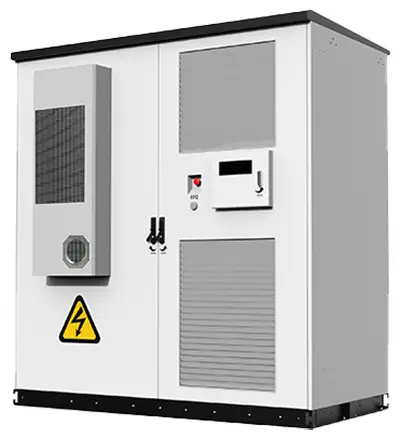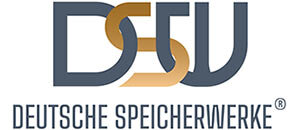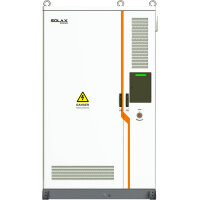Peak Shaving with C&I Energy Storage Systems
In the modern energy landscape, companies face the challenge of not only optimizing their overall energy costs, but also reducing the costs of peak loads. Peak shaving – the targeted capping of power peaks through the use of energy storage systems – is developing into a key strategy for industrial and commercial companies. Commercial & Industrial (C&I) energy storage systems offer powerful and economically attractive solutions for this.

Basics of Peak Shaving
Peak shaving refers to the reduction of peak loads in a company's electricity consumption. The importance of this approach is explained by the structure of electricity costs for commercial consumers: In addition to the pure energy costs (in kWh), there are performance-dependent costs that are based on the highest power consumed (in kW) within a billing period. These power prices, or grid charges, can make up a significant portion of total energy costs, often 20-40% of the annual electricity bill.
The challenge lies in the fact that even short-term peak loads, which occur for only a few hours or even minutes per month, can form the basis for calculating power prices. An example illustrates this: A company with an average load of 200 kW, which only has a load of 350 kW for one hour on a few days a month, still pays the power charge for the full 350 kW – and often for the entire month or even the entire year.
How Peak Shaving with C&I Storage Works
C&I energy storage systems offer an effective approach to reducing these peak loads. The basic principle is simple: The energy storage system is charged during times of low grid load and releases the stored energy during times of high load to reduce grid consumption and cap the peak load.
In practice, such a system typically operates according to the following model: An intelligent energy management system continuously monitors the company's electricity consumption. If a defined threshold is exceeded or a peak load is imminent, the system activates the battery storage, which provides additional energy. This reduces electricity consumption from the public grid and caps the peak load. As soon as consumption falls below the critical threshold, the storage is deactivated and later recharged during off-peak times.
Modern C&I storage systems for peak shaving feature powerful forecasting algorithms that can recognize and predict typical consumption patterns. These systems use historical data, current operating conditions, and even external factors such as weather forecasts to predict energy consumption and proactively deploy the storage.
Peak Shaving through C&I Energy Storage Systems
In the modern energy landscape, companies face the challenge of not only optimizing their overall energy costs, but also reducing the costs of peak loads. Peak shaving - the targeted capping of power peaks through the use of energy storage systems—is developing into a key strategy for industrial and commercial companies. Commercial & Industrial (C&I) energy storage systems offer powerful and economically attractive solutions for this.

Basics of Peak Shaving
Peak shaving refers to the reduction of peak loads in a company's electricity consumption. The importance of this approach is explained by the structure of electricity costs for commercial consumers: In addition to the pure energy costs (in kWh), there are performance-dependent costs that are based on the highest power consumed (in kW) within a billing period. These performance charges, or grid charges, can account for a significant portion of total energy costs, often 20-40% of the annual electricity bill.
The challenge lies in the fact that even short-term peak loads, which occur for only a few hours or even minutes per month, can form the basis for calculating performance charges. An example illustrates this: A company with an average load of 200 kW, which only has a load of 350 kW for one hour on a few days a month, still pays the power charge for the full 350 kW – and often for the entire month or even the entire year.
How Peak Shaving with C&I Storage Works
C&I energy storage systems offer an effective approach to reducing these peak loads. The basic principle is simple: The energy storage system is charged during times of low grid load and releases the stored energy during times of high load to reduce grid consumption and cap the peak load.
In practice, such a system typically operates according to the following model: An intelligent energy management system continuously monitors the company's electricity consumption. If a defined threshold is exceeded or a peak load is imminent, the system activates the battery storage, which provides additional energy. This reduces electricity consumption from the public grid and caps the peak load. As soon as consumption falls below the critical threshold, the storage is deactivated and later recharged during off-peak times.
Modern C&I storage systems for peak shaving feature powerful forecasting algorithms that can recognize and predict typical consumption patterns. These systems use historical data, current operating conditions, and even external factors such as weather forecasts to predict energy consumption and proactively deploy the storage.
Technical Aspects of Peak Shaving Systems
C&I energy storage systems for peak shaving applications differ in some aspects from systems primarily geared towards self-consumption optimization. While storage capacity (kWh) is the primary consideration for self-consumption optimization, power (kW) is the decisive criterion for peak shaving. The storage capacity only needs to be sufficient to cover the typical duration of peak loads.
A typical peak shaving system consists of several main components: the actual battery storage system, usually lithium-ion, which temporarily stores the energy; the power electronics, which ensure the conversion between direct and alternating current and the grid connection; and the energy management system, which controls the optimal use of the storage system.
Economic Efficiency of Peak Shaving
The economic benefits of peak shaving arise primarily from the reduction of performance-dependent grid charges and electricity costs. The savings can be considerable: For a medium-sized industrial company with a peak load reduction of 100 kW and power prices of €100/kW per year, annual savings of €10,000 are achieved. For larger operations or higher power prices, the savings can be correspondingly higher.
The payback period for peak shaving systems is typically between three and seven years, depending on the specific load profiles and local grid charges. This is often significantly shorter than for pure self-consumption systems, making peak shaving an attractive initial investment in energy storage technology.
Another economic advantage: peak shaving systems can often be expanded modularly. Companies can start with a basic solution and gradually expand it based on positive experience or rising energy costs. In addition, peak-shaving systems can be combined with other applications such as self-consumption optimization or emergency power supply, which further improves economic efficiency.
Practical Implementation and Challenges
The successful implementation of a peak-shaving system begins with a detailed analysis of the load profile. Ideally, load data is collected with high temporal resolution (15-minute values or finer) over a longer period of time to identify typical patterns, seasonal fluctuations, and unusual events. Based on this data, a suitable system can then be dimensioned.
One challenge during implementation lies in integrating the storage system into the existing energy infrastructure. The system must be able to integrate seamlessly into existing energy management systems and respond reliably to peak loads. Modern systems have open interfaces that facilitate this integration.
Another challenge is the precise forecasting of peak loads. Unforeseen production peaks or technical malfunctions can lead to peak loads that the system fails to detect in a timely manner. Advanced algorithms can improve forecast accuracy by analyzing historical data and considering external factors.
For optimal use of a peak shaving system, regular monitoring and adjustment of operating parameters is also important. Changes in the production process, new machines, or seasonal fluctuations can alter the load profile and require adjustment of the control algorithms.
Technical Aspects of Peak Shaving Systems
C&I energy storage systems for peak shaving applications differ in some aspects from systems primarily geared towards self-consumption optimization. While storage capacity (kWh) is the primary consideration for self-consumption optimization, power (kW) is the decisive criterion for peak shaving. The storage capacity only needs to be sufficient to cover the typical duration of peak loads.
A typical peak shaving system consists of several main components: the actual battery storage system, usually lithium-ion, which temporarily stores the energy; the power electronics, which ensure the conversion between direct and alternating current and the grid connection; and the energy management system, which controls the optimal use of the storage system.
Economic Efficiency of Peak Shaving
The economic benefits of peak shaving arise primarily from the reduction of performance-dependent grid charges and electricity costs. The savings can be considerable: For a medium-sized industrial company with a peak load reduction of 100 kW and power prices of €100/kW per year, annual savings of €10,000 are achieved. For larger operations or higher power prices, the savings can be correspondingly higher.
The payback period for peak shaving systems is typically between three and seven years, depending on the specific load profiles and local grid charges. This is often significantly shorter than for pure self-consumption systems, making peak shaving an attractive initial investment in energy storage technology.
Another economic advantage: peak shaving systems can often be expanded modularly. Companies can start with a basic solution and gradually expand it based on positive experience or rising energy costs. In addition, peak-shaving systems can be combined with other applications such as self-consumption optimization or emergency power supply, which further improves economic efficiency.
Practical Implementation and Challenges
The successful implementation of a peak-shaving system begins with a detailed analysis of the load profile. Ideally, load data is collected with high temporal resolution (15-minute values or finer) over a longer period of time to identify typical patterns, seasonal fluctuations, and unusual events. Based on this data, a suitable system can then be dimensioned.
One challenge during implementation lies in integrating the storage system into the existing energy infrastructure. The system must be able to integrate seamlessly into existing energy management systems and respond reliably to peak loads. Modern systems have open interfaces that facilitate this integration.
Another challenge is the precise forecasting of peak loads. Unforeseen production peaks or technical malfunctions can lead to peak loads that the system fails to detect in a timely manner. Advanced algorithms can improve forecast accuracy by analyzing historical data and considering external factors.
For optimal use of a peak shaving system, regular monitoring and adjustment of operating parameters is also important. Changes in the production process, new machines, or seasonal fluctuations can alter the load profile and require adjustment of the control algorithms.
Practical Example: Peak Shaving in an Industrial Company
A vivid example of the successful implementation of a peak shaving system can be found in a metalworking company with energy-intensive production processes. The company regularly experienced peak loads of up to 500 kW, while the base load was around 250 kW. These peaks were primarily caused by the simultaneous operation of several melting furnaces, each requiring high power for approximately 30-45 minutes.
After a detailed analysis, the company installed a 200 kW/150 kWh battery storage system. The system was configured to automatically activate and provide additional power when a threshold of 350 kW was exceeded. The results were impressive: The maximum grid power consumption could be reliably limited to 350 kW, resulting in a reduction in annual grid fees of approximately €15,000. With investment costs of approximately €75,000, this results in a payback period of approximately five years.
In addition to the economic benefits, the company observed an improvement in grid quality and a reduction in voltage fluctuations, which had a positive impact on the service life of sensitive electronic components.
Combined Approaches and Future Perspectives
A growing trend is the combination of peak shaving with other energy optimization strategies. The combination with self-consumption optimization is particularly attractive: While peak shaving reduces power peaks, self-consumption optimization maximizes the use of self-generated energy. An intelligently controlled system can pursue both goals and prioritize them depending on the situation.
Further developments are emerging in the field of predictive control. Artificial intelligence and machine learning enable increasingly precise predictions of energy consumption and proactive storage management. Instead of simply reacting to emerging peak loads, these systems can anticipate potential peaks and initiate countermeasures early on.
Sector coupling also offers interesting prospects: The integration of heat and cold storage systems or the inclusion of electric vehicle fleets in the peak-shaving concept expands the available flexibility options and can further improve economic efficiency.
Another promising approach is participation in flexibility markets. In addition to internal peak shaving, battery storage systems can also provide system services for the public power grid, thus generating additional revenue. These so-called "stacked services" significantly improve the economic viability of battery storage systems.
Conclusion
Peak shaving using C&I energy storage systems offers companies an effective way to reduce their energy costs while contributing to grid stability. The relatively short payback periods make this technology economically attractive for many companies.
The ongoing development of battery technologies, falling costs, and the increasing integration of artificial intelligence will make peak shaving systems even more efficient and economical in the future. Companies that invest early in this technology can secure a competitive advantage while preparing for an increasingly flexible and decentralized energy landscape.
Given rising energy costs and the growing importance of grid stability in a renewable energy-driven power system, peak shaving will continue to gain importance in the coming years. C&I energy storage systems will play a key role in this, supporting the transformation to a more sustainable and flexible energy system.
Practical Example: Peak Shaving in an Industrial Company
A vivid example of the successful implementation of a peak shaving system can be found in a metalworking company with energy-intensive production processes. The company regularly experienced peak loads of up to 500 kW, while the base load was around 250 kW. These peaks were primarily caused by the simultaneous operation of several melting furnaces, each requiring high power for approximately 30-45 minutes.
After a detailed analysis, the company installed a 200 kW / 150 kWh battery storage system. The system was configured to automatically activate and provide additional power when a threshold of 350 kW was exceeded. The results were impressive: The maximum grid power could be reliably limited to 350 kW, resulting in a reduction in annual grid fees of approximately €15,000. With investment costs of approximately €75,000, This results in a payback period of approximately five years.
In addition to the economic benefits, the company observed an improvement in grid quality and a reduction in voltage fluctuations, which had a positive impact on the service life of sensitive electronic components.
Combined Approaches and Future Perspectives
A growing trend is the combination of peak shaving with other energy optimization strategies. The combination with self-consumption optimization is particularly attractive: While peak shaving reduces power peaks, self-consumption optimization maximizes the use of self-generated energy. An intelligently controlled system can pursue both goals and prioritize them depending on the situation.
Further developments are emerging in the area of predictive control. Artificial intelligence and machine learning enable increasingly precise predictions of energy consumption and proactive storage management. Instead of simply reacting to emerging peak loads, these systems can anticipate potential peaks and initiate countermeasures early on.
Sector coupling also offers interesting prospects: The integration of heat and cold storage systems or the inclusion of electric vehicle fleets in the peak-shaving concept expand the available flexibility options and can further improve economic efficiency.
Another promising approach is participation in flexibility markets. In addition to internal peak shaving, battery storage systems can also provide system services for the public power grid, thus generating additional revenue. These so-called "stacked services" significantly improve the economic viability of battery storage systems.
Conclusion
Peak shaving using C&I energy storage systems offers companies an effective way to reduce their energy costs while contributing to grid stability. The relatively short payback periods make this technology economically attractive for many companies.
The ongoing development of battery technologies, falling costs, and the increasing integration of artificial intelligence will make peak shaving systems even more efficient and economical in the future. Companies that invest early in this technology can secure a competitive advantage while preparing for an increasingly flexible and decentralized energy landscape.
Given rising energy costs and the growing importance of grid stability in a renewable energy-driven power system, peak shaving will continue to gain importance in the coming years. C&I energy storage systems will play a key role in this, supporting the transformation to a more sustainable and flexible energy system.














